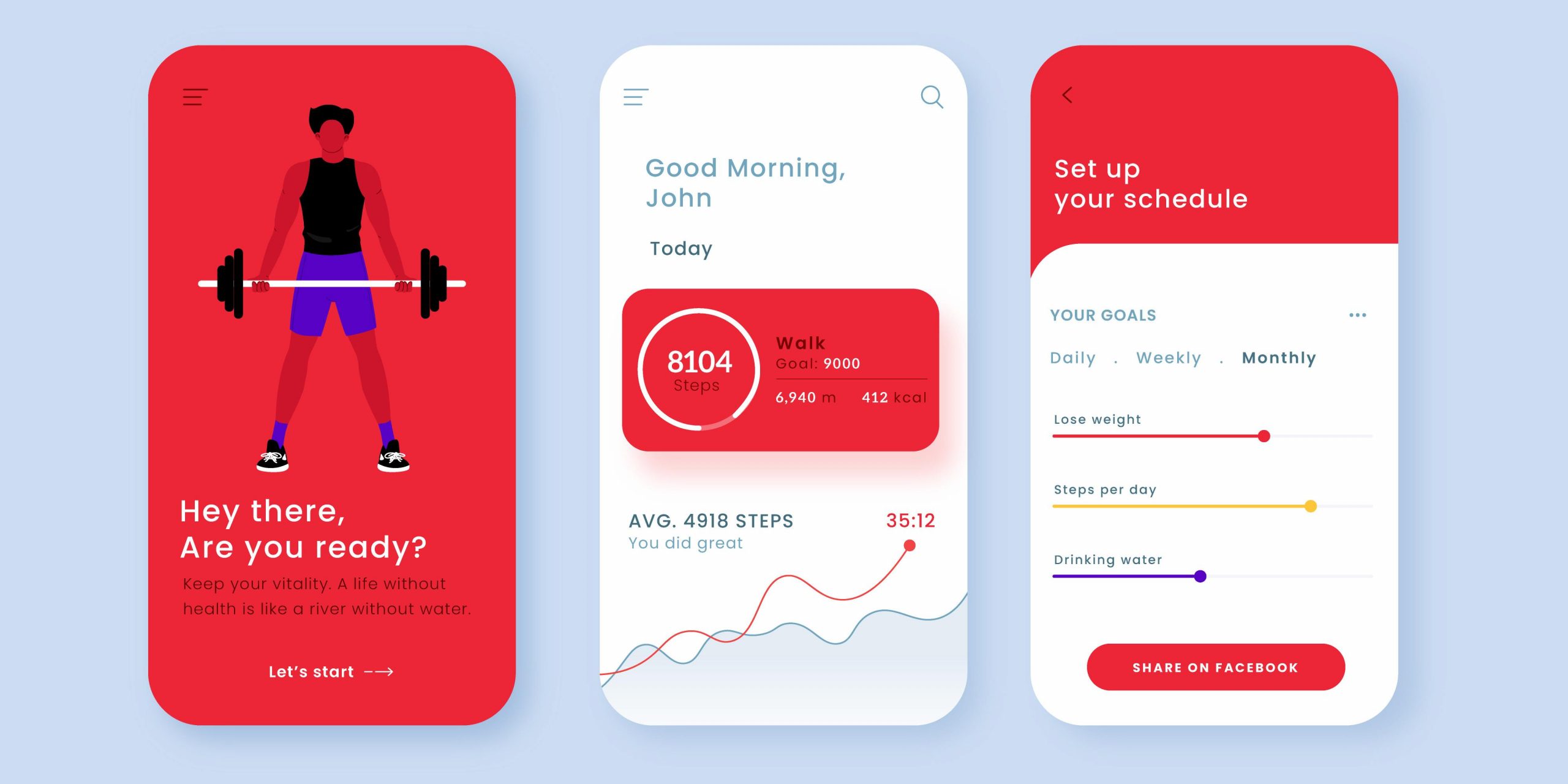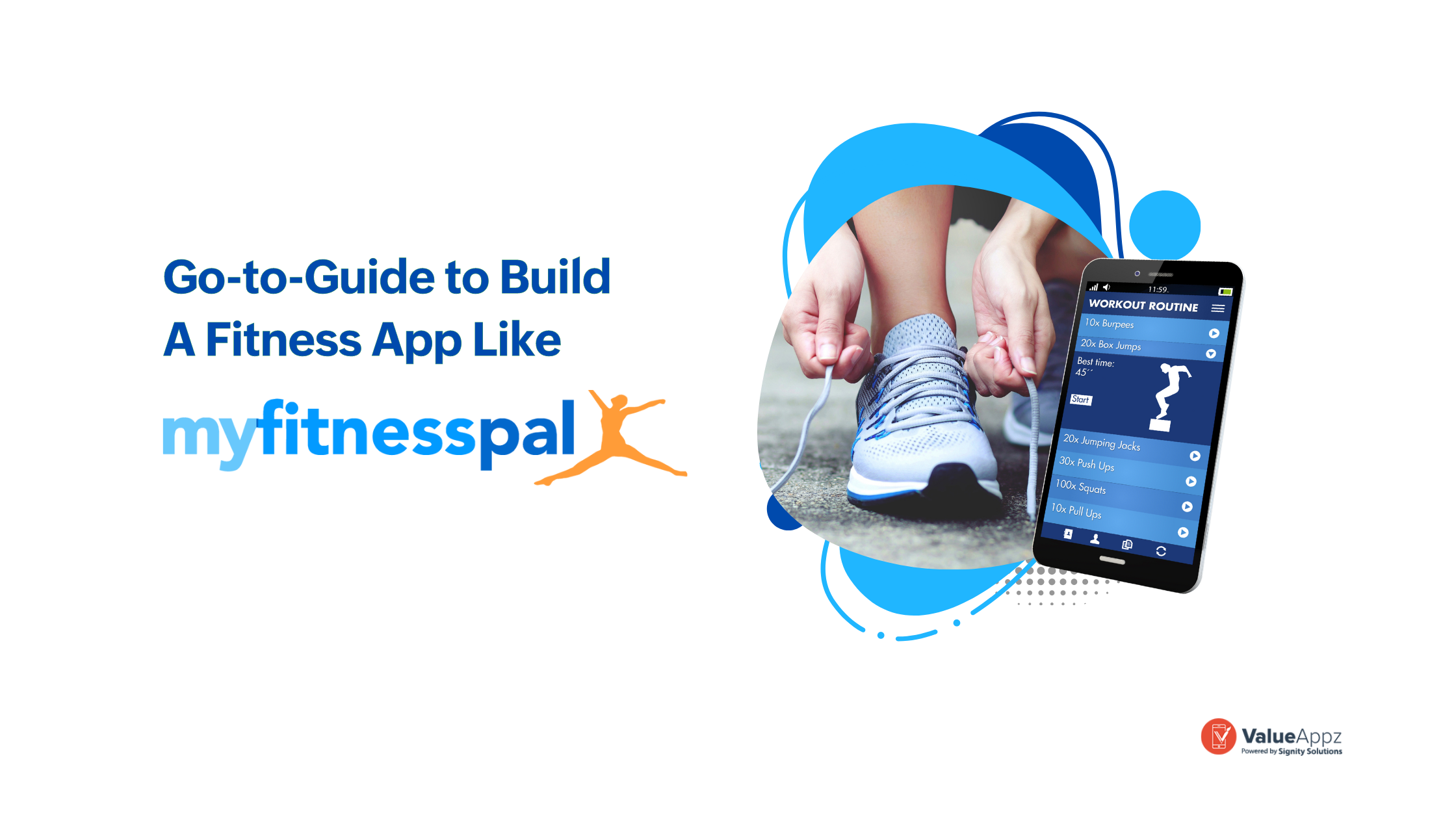Fitness Trainer App: 7 Things To Consider Before Building The App

Summary: If you are into the fitness industry, a fitness trainer app should be your first step in 2023 to build a solid customer base. Imagine being able to communicate with your clients through an app and providing live sessions, demos, diets, and more with just one platform. Interested in building the app? Know the top seven things you must consider when creating a fitness trainer app.
Fitness trainer apps have given the right motivation to people from all generations. Even those who could not visit the gym, a training center, or yoga classes due to busy schedules or the nonavailability of trainers nearby have gained the best benefits from the best fitness trainer apps.
Further, it has also helped those struggling with health problems. Fitness trainer apps have enabled them to get the perfect solutions without delays. For instance, they can now connect with a professional trainer and plan their diet and exercise routine with them.
If you have your gym, provide yoga classes, or help people with meditation or diet, a fitness trainer app is what you need to invest in right away. It is the perfect time to take your services online so that you can enhance brand awareness, attract more customers, and retain them for longer.
Table of Contents
Market size and fitness trainer app facts
Want to know if fitness app development is the right idea for your business? The fitness trainer app has a significant market size, and with the rising demand for it, the market is expected to reach USD 15.2 Billion by 2028. Some other reasons that make it a good investment for your fitness services are:
- Approximately 1.2 billion U.S. dollars in funding was invested in developing mHealth apps.
- In addition, 26% of fitness trainer app users use their apps more than ten times a week.
- Workout and weight-loss apps account for about 73% of health and fitness sessions.
- As of 2022, there were 86.3 million fitness trainer app users in the United States.
The above numbers clearly prove that the demand for the best fitness trainer apps is on the rise, making it the best time for you to invest in it and take your services global.
7 things to consider before creating a fitness trainer app
Want to take your fitness services online? Are you looking to build an engaging and attractive fitness trainer app? Well, before you begin with the process, there are a few things that you have to consider carefully to ensure that the app is designed and developed to meet your business goals. Below are the top seven things to consider:
1. Define your target audience
Who do you want to build the app for? Your first step for fitness app development should be knowing your audience in and out. For example, the target audience could include a group of people like bodybuilders, runners, and individuals trying to lose weight. Understanding the target market will help you develop an app catering to their needs and interests.
Consider criteria such as age, gender, exercise level, fitness goals, geography, and lifestyle when specifying your target audience. The data will assist you in developing user personas that represent your target population and will influence your app development process.
For instance, if your target audience is clients who want to lose weight, your app might contain tools like a calorie counter, meal planner, and workout diary. On the other hand, if your intended audience includes experienced bodybuilders, your app may have features like workout schedules, monitoring tools, and progress charts.
2. Choose the type of fitness trainer app
Fitness app development consists of various types, and choosing one of them should be your next step. The type of app you pick will be determined by the specific niche you wish to target as well as the needs of your target audience. Some examples of popular health and fitness applications are:
- Activity tracking apps: These apps help track physical activity and monitor steps taken, calories burned, and distance traveled. These are typically integrated with wearable devices like fitness trackers and smartwatches.
- Workout and exercise apps: If you want to provide workout routines and exercise guides and help users track progress, workout and exercise apps are the best idea. You may also add videos and photos to illustrate proper exercise techniques.
- Diet and nutrition apps: These apps assist users in tracking their food intake, calculating calories, and creating meal plans. You can also include features such as recipe suggestions, food logging, and grocery lists.
- Meditation and mindfulness app: It is the best fitness trainer app idea for promoting meditation. You can add guided meditation and mindfulness exercises to the app to help your users relax and reduce stress.
- Yoga apps: These apps include yoga programs as well as guided yoga sessions for their users.
- Personal coaching apps: Personal coaching apps give users personalized coaching, such as customized fitness and nutrition routines.
Selecting the right kind of health and fitness app is critical because it will influence the app’s features, functioning, and user experience. So first, you must undertake extensive market research to find the most popular sorts of apps in your target area. Then, you may design an app that fits the particular demands of your target audience and stands out from the competition by selecting the proper sort of app.

3. Choose the right platform
After deciding what type of fitness trainer app you wish to build, you need to choose the right platform. As the platform you choose will directly influence the types of devices, development tools, and features that users will be able to access, you need to pick the platform carefully. The two widely used smartphone systems are iOS and Android.
Though the iOS platform has a smaller market share than Android, its user base is more affluent. These users are more likely to pay for apps and in-app purchases without hesitation than Android users. Also, iOS provides a consistent user experience across various devices, making it easier to design and develop.
On the other hand, Android devices are more accessible to a broader audience as it provides various pricing models. It is also an open-source platform that gives developers more freedom to customize their apps.
4. Pick the app’s features
Now that you have made a decision on the type of fitness trainer app you want to build, it is time to consider the features to add to it. The features will determine the app’s functionality and the types of services that you provide to your users.
Below is a table presenting some crucial features you must include in the app to make it engaging and more valuable.
| Feature | Description |
| User profile | Let users create and customize their profiles and information like personal information, fitness goals, and progress tracking. |
| Workout library | Provide a comprehensive library of workouts and exercises so users can choose from them based on their fitness goals, fitness level, and preferences. |
| Exercise videos | Ensure proper exercise techniques and forms with a video demonstration of exercise and workout. |
| Progress tracker | Let users track their daily progress and measure performance over time, like weight loss, muscle gain, and endurance improvement. |
| Social sharing | Let your app users be able to share their progress and achievements on social media platforms like Facebook, Twitter, and Instagram. |
| Nutrition tracker | Allow your users to track their food intake, monitor calorie intake, and maintain nutrient balance. |
| Push notifications | Send important reminders, notifications, and alerts to motivate and engage your app users. |
| In-app purchases | Provide users with the ability to purchase premium content, customized workouts, and personalized coaching services. |
By incorporating these critical features, you can design a fitness trainer app that adds value and utility to your customers’ lives, increasing engagement, retention, and income. But first, conduct market research to determine the most popular features and functionalities in your target market and consider incorporating those into your app.
5. Keep the design minimal
The fifth aspect is considering the app design. Keeping the design to the minimum is vital to ensure your fitness trainer app is user-friendly, simple to use, and pleasing. The app design should focus on UI/UX simplicity, adding only the essential features and eliminating any clutter or distractions. Further, it will help create a more intuitive and seamless user experience and enhance the performance of the fitness trainer app.
Here is how you can keep the app design minimum to ensure better user engagement:
- Focus on essential features: When designing your app, prioritize the most critical features and functionalities. Avoid adding too many features that can overwhelm users and create confusion.
- Use clear and simple typography: Use a simple font and easy-to-read text to enhance legibility and readability. Avoid using multiple font styles, sizes, and colors.
- Choose a limited color palette: Choose a limited color palette to avoid overwhelming users with too many colors. Use contrasting colors to highlight essential elements and create a clear visual hierarchy.
- Utilize negative space: Negative space refers to the blank or empty space around design elements. Use negative space to create a visual breathing room and make essential features stand out.
Following these design principles will ensure that your health and fitness app is easy to use and that users can access all the solutions hassle-free.
6. Choose the monetization model
Choosing the proper monetization strategy is critical before developing a fitness trainer app because it defines how your app will make money. There are various monetization schemes, each with its benefits and drawbacks. Here are some examples of common fitness trainer app monetization models:
- Freemium model: The model lets the users use the app for free, but certain features and content are accessible only after the user pays a fee. It is suitable for apps with broad appeal and a large user base.
- In-app advertising model: The model lets the app owner make money by enabling the brands to advertise through the app. It is the best monetization model for those with a high engagement rate.
- Subscription model: The subscription model is another widely used monetization model for the fitness trainer app. Under this, users pay a recurring fee to access premium features.
- Paid model: Users pay a one-time price to download and utilize the software under this approach. The paid model is the perfect choice for fitness apps that provide unique and valuable features that customers are willing to pay for.
When deciding on a monetization model, keep in mind your target audience’s needs and preferences, the value proposition of your app, and the competitive landscape. By selecting the appropriate monetization plan, you can ensure that your app makes income and is sustainable in the long run.
7. Plan the app budget
Budget is one of the essential factors for fitness app development. Creating a precise budget plan can assist you in avoiding unforeseen costs, effectively allocating resources, and ensuring that your app remains profitable in the long run.
Here is an approximate cost for fitness trainer app development:
| Cost component | Estimated cost |
| App design | $2,000-$6,000 |
| App development | $20,000-$50,000 |
| Quality assurance | $4,000 – $8,000 |
| Backend development | $10,000-$25,000 |
| API development | $2,000-$5,000 |
| Server setups and hosting | $3,000-$5,000 |
The above-mentioned cost should not be considered the exact cost for the fitness trainer app development. Remember that this price can vary based on the number of features to be added, app design complexity, location of the development team, etc. Hence, the cost may be different from how you budget it. Therefore, you should be prepared for it.

Ready to launch your fitness trainer app?
Whether you run a startup or are into an existing business that provides health and fitness services, ValueAppz can help you take your services online with a robust fitness trainer app. Our business professionals will help you pick the best features and most engaging design for your fitness app. ValueAppz fitness app development services are built for all types of businesses and budgets. So, contact our experts and get the best fitness trainer app for your services.
FAQs
What features should a fitness app have?
The fitness trainer app must include features like user profiles, exercise videos, demos, social sharing, daily progress tracker, in-app purchases, and push notifications.
Is fitness app profitable?
Yes, fitness apps are profitable and are in great demand. Its market has grown largely over the years, and the growth is expected to be manifold in the coming years.
How much does it cost to create a fitness app?
On average, the cost of a fitness trainer app can vary between $15,000-$60,000. The price can further vary based on factors like app features, complexity, design, development time and the team location.
What makes a fitness app successful?
To make the fitness app successful, you must keep the design minimum, include all essential features, develop using the latest technology, and ensure engaging UI/UX for a seamless user experience.
What do you need to start a fitness app?
To start a fitness trainer app, you need to plan its design, features, and budget and find a fitness app development company with the right experience.
THE AUTHOR
Giandeep Singh
I am a writer and marketing specialist who loves to explore new digital strategies to boost business growth online.

Get ready to digitally transform your business.
Let our team help take your business to the next level. Contact us today to get started on finding the perfect solutions for your business needs.










